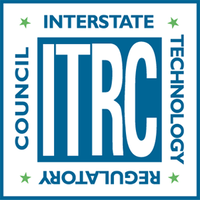 From the Interstate Technology Regulatory Council:
From the Interstate Technology Regulatory Council:
Cyanobacteria are microscopic, photosynthetic organisms that are found naturally in all aquatic environments. Under certain conditions, cyanobacteria can multiply and become very abundant, discoloring the water throughout a water body or accumulating at the surface; these occurrences are known as blooms. Cyanobacteria may produce potent toxins (cyanotoxins) that can pose a threat to human health, wildlife and domestic animals, aquatic ecosystems, and local economies.
This ITRC guidance provides discusses key aspects of on harmful cyanobacterial blooms management for that waterbody managers and others interested parties should consider as they respond to these events.
The guidance provides information and resources for monitoring for cyanobacteria, risk communication and response planning, management and prevention strategies, and recommendations. The guidance also provides tools to help waterbody managers select appropriate methods for monitoring, strategies for managing blooms, and strategies for nutrient management to prevent blooms.
Access all materials at the website here: https://hcb-1.itrcweb.org/
Along with the release of the Harmful Cyanobacteria Guidance Document, the team developed a series of downloadable sheets that provide descriptions of management strategies evaluated for effectiveness, advantages, limitations, relative cost, and regulatory and policy considerations.
Access the downloadable sheets here: https://hcb-1.itrcweb.org/fact-sheets/
Complementing this eagerly-anticipated guidance document, ITRC’s HCB Team will be hosting live internet-based training sessions to accompany this new guidance. The first session will be on April 29, 2021 (1:00pm – 3:15pm EST), and will provide an in-depth look into Strategies for Preventing and Managing Harmful Cyanobacterial Blooms.


